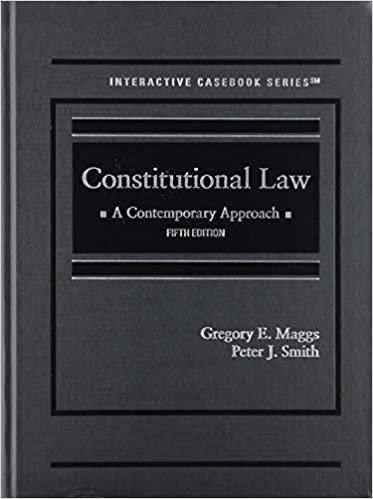Question
Julie operates a skydiving camp for people learning to skydive. The first jump for every participant is a tandem jump where the camp instructors are
Julie operates a skydiving camp for people learning to skydive. The first jump for every participant is a tandem jump where the camp instructors are actually hooked up to the novice skydiver. This is done so that new skydiver's don't panic when free-falling (ie: falling without your parachute being open), the instructor basically controls when the parachute opens. Little Johnny (18 years old and not so little) was taught all of the safety procedures and showed how to put on his equipment properly. He was clearly warned that he was to keep all of his safety equipment on at all times while skydiving. The morning of his first jump was a beautiful sunny day and Little Johnny was eager to try his first jump. The plan was to jump from a height of 15,000 feet and free-fall until 6,000 feet, at which time the instructor will deploy the parachute. The instructor, Brian, was a bit of a daredevil himself and decided to not deploy the parachute until 4,000 feet, a riskier move but within the minimum distance permitted by law. Little Johnny, meanwhile, had unhooked his helmet during the dive and through it towards the ground, curious as to whether the helmet would reach the ground before he did. The lower deployment altitude (ie: opening the parachute at 4,000 ft rather than the recommended 6,000 ft) meant that the two divers hit the ground at an increased rate of speed. When they landed, Little Johnny fell backwards and badly injured himself when his head hit the ground.
Do we have a tort? What would be the basis of Little Johnny's claim claim? Is there anything Julie can say in response? What would be a reasonable outcome in this case? Defend your answer by showing you fully understand the potential legal issues here.
2.Prisha has great difficulty sleeping, constantly worrying about the business she owns. It is a large, complicated business that operates in multiple countries. For each of the following issues, advise Prisha of a risk management strategy that might help reduce risk for her business -do NOT use the same strategy twice!! Name the strategy, explain why you believe each strategy you identify is appropriate, and how you believe it will lessen risk to her business.
- Equipment is regularly stolen from the yard in behind her warehouse.
- There has been a military coup in Venezuela, impacting the ongoing profitability of her business in that country.
- She is nervous that her business consultancy division (advising clients on complex financial transactions) could result in a large lawsuit if her professional advisors make an error.
- She is debating opening a division in China - the potential market is huge, but she is worried about the political risk associated with the Chinese government.
Step by Step Solution
There are 3 Steps involved in it
Step: 1

Get Instant Access to Expert-Tailored Solutions
See step-by-step solutions with expert insights and AI powered tools for academic success
Step: 2

Step: 3

Ace Your Homework with AI
Get the answers you need in no time with our AI-driven, step-by-step assistance
Get Started


